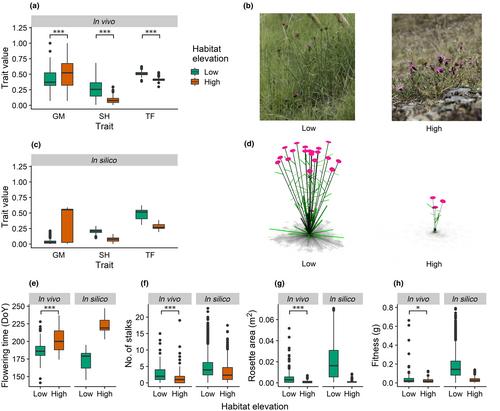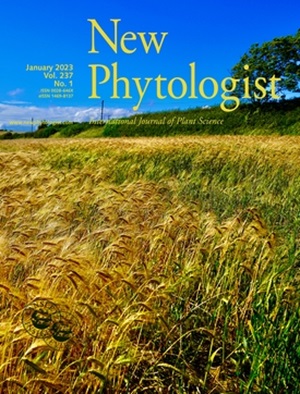通过植物功能结构进化建模揭示局部适应的驱动因素
IF 8.3
1区 生物学
Q1 PLANT SCIENCES
引用次数: 0
摘要
摘要 沿环境梯度对不同环境条件的局部适应是植物种群中的一个普遍现象,但我们对单个选择因子如何促进这一进化过程缺乏机制上的了解。在此,我们开发了一种新的植物功能结构进化(E-FSP)模型,该模型再现了虚拟植物沿环境梯度的局部适应性。首先,我们通过测试该模型能否再现瑞士阿尔卑斯山石竹属植物的两种海拔生态型来验证该模型。其次,我们使用 E-FSP 模型来区分非生物(温度)和生物(竞争和授粉)选择压力对石竹属植物海拔适应性的相对贡献。我们的结果表明,D. carthusianorum的海拔适应主要是由非生物环境驱动的。该模型再现了海拔生态型之间在两个表观性状(发芽率和开花时间)和一个形态性状(茎秆高度)上的质的差异,以及由 G × E 相互作用产生的四个性能变量(开花时间、茎秆数量、莲座丛面积和种子产量)上的质的差异。我们的方法展示了如何将包含生理、生态和进化机制的 E-FSP 模型与实验相结合,以检验有关田间观察到的适应模式的假设。本文章由计算机程序翻译,如有差异,请以英文原文为准。

Unravelling drivers of local adaptation through evolutionary functional–structural plant modelling
求助全文
通过发布文献求助,成功后即可免费获取论文全文。
去求助
来源期刊

New Phytologist
生物-植物科学
自引率
5.30%
发文量
728
期刊介绍:
New Phytologist is an international electronic journal published 24 times a year. It is owned by the New Phytologist Foundation, a non-profit-making charitable organization dedicated to promoting plant science. The journal publishes excellent, novel, rigorous, and timely research and scholarship in plant science and its applications. The articles cover topics in five sections: Physiology & Development, Environment, Interaction, Evolution, and Transformative Plant Biotechnology. These sections encompass intracellular processes, global environmental change, and encourage cross-disciplinary approaches. The journal recognizes the use of techniques from molecular and cell biology, functional genomics, modeling, and system-based approaches in plant science. Abstracting and Indexing Information for New Phytologist includes Academic Search, AgBiotech News & Information, Agroforestry Abstracts, Biochemistry & Biophysics Citation Index, Botanical Pesticides, CAB Abstracts®, Environment Index, Global Health, and Plant Breeding Abstracts, and others.
 求助内容:
求助内容: 应助结果提醒方式:
应助结果提醒方式:


